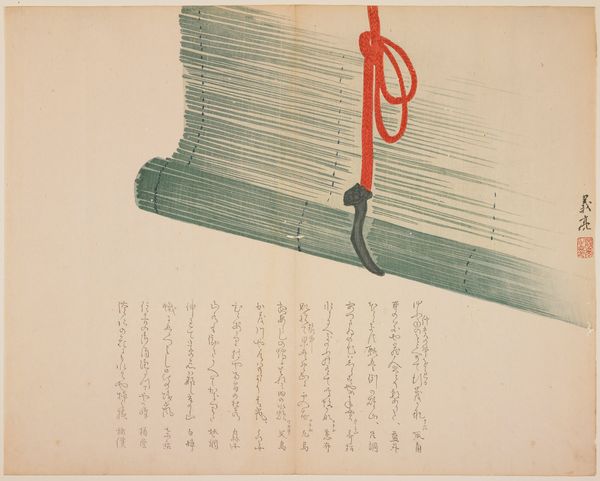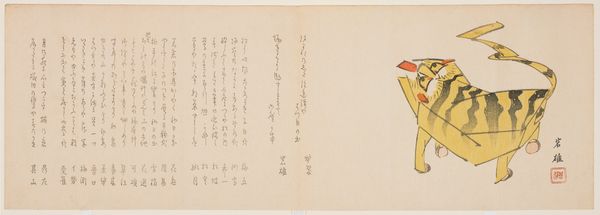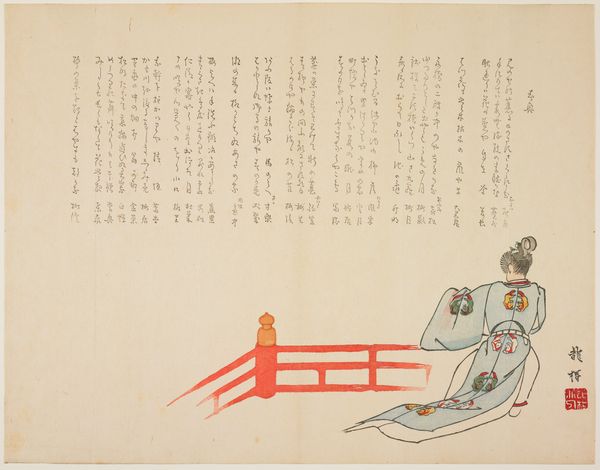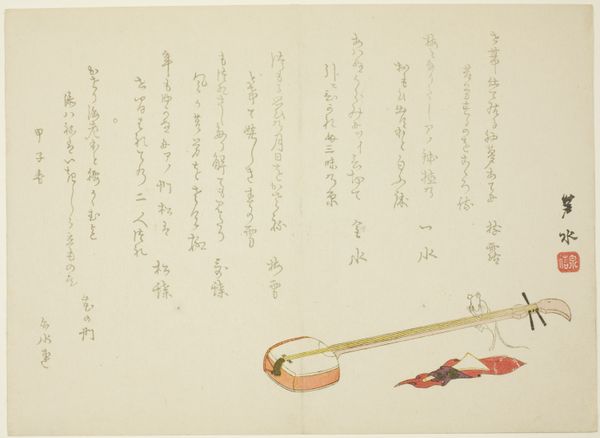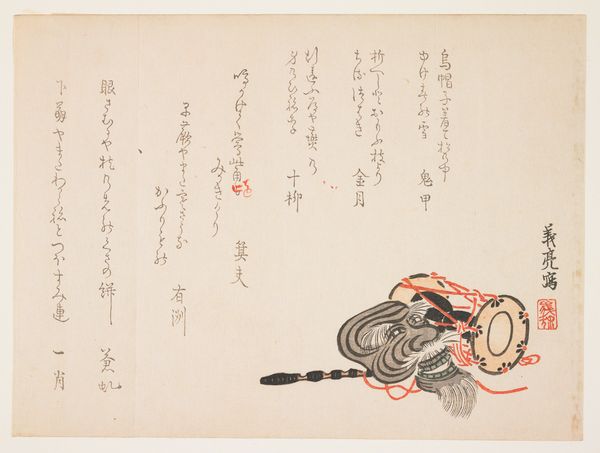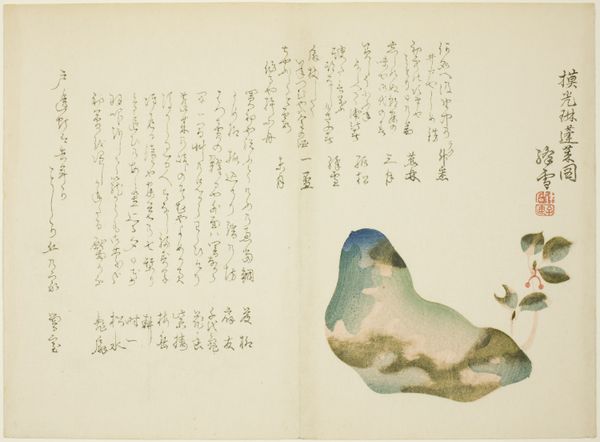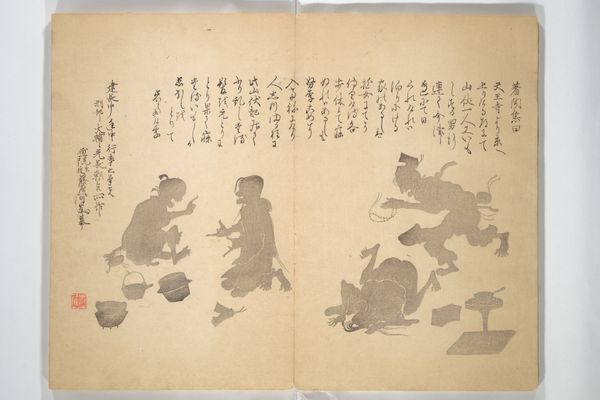
drawing, print, textile, ink, woodblock-print
#
drawing
# print
#
asian-art
#
textile
#
ukiyo-e
#
japan
#
ink
#
woodblock-print
#
watercolour illustration
#
botanical art
Dimensions: 15 x 19 1/4 in. (38.1 x 48.9 cm) (image, sheet)
Copyright: Public Domain
Editor: Here we have Okamoto Toyohiko's "(Three branches of coral)", made between 1818 and 1829, it's a woodblock print. I find the bright red coral striking against the empty space and elegant script. How do you interpret this work? Curator: Well, coral in Japanese art is quite interesting. It is connected to ideas of rarity and preciousness but also resilience, since it comes from the depths of the sea and endures pressure. Its color, particularly the red here, historically signifies vitality and protection. It is juxtaposed here with calligraphy - have you observed how it dances across the upper section of the page? Editor: Yes! The script seems almost separate from the coral, but they still feel balanced together, rather than fighting each other for my attention. What would that mean? Curator: Indeed, the balance brings it together: writing about an object versus depicting that object allows them both to act as images and signs together. I think that this can speak to a cultural desire to connect deeply with nature. Does this work remind you of anything specific when you look at the overall layout? Editor: Actually, now that you mention it, the composition is reminiscent of traditional Japanese textiles. The script at the top feels like a header or pattern, and the coral becomes a beautiful, naturalistic motif repeated at the bottom. Curator: Precisely. Cultural memory finds expression through seemingly disparate forms here - print, script, nature, textile motifs- each borrowing from and informing the other to establish symbolic continuity. Do you agree? Editor: Absolutely, I see it now! The blending of forms is really clever and contributes to a layered viewing experience. I initially thought it was a simple print, but it's much richer than that. Curator: And, it offers insight into the enduring cultural importance of symbolic forms. It makes one think about what images we see around us everyday and what cultural memory they, too, possess.
Comments
No comments
Be the first to comment and join the conversation on the ultimate creative platform.

